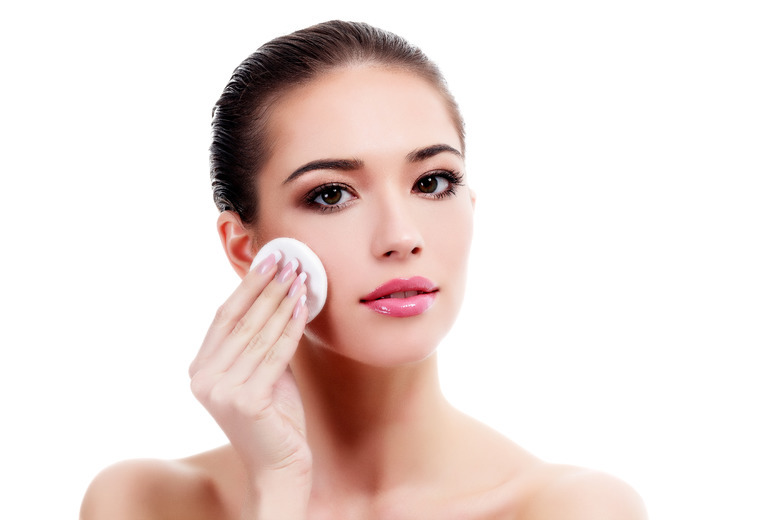Vegan cosmetics. How to choose them wisely?
By choosing them we protect environment and take care of animals – this is the aware consumerism. Indeed, we get high-quality products but, at the same time, we don’t contribute to improving the living conditions of animals and limiting, frequently very drastic, tests that the creatures are subjected to. What are vegan cosmetics in particular, what substances are they made from and are they effective?
 Vegan cosmetics – definition
Vegan cosmetics – definition
Vegan cosmetics are all the products that don’t contain any substances deriving from the body of an animal; also, such products aren’t tested on animals. They are all the cruelty-free cosmetics which don’t contain any animal originated substances – even without trace amounts. Instead, vegan cosmetics base their action on vegetable originated substances, herbal extracts and minerals. Moreover, they feature neither synthetic colourants nor other comedogenic substances.
In the light of this, using vegan products isn’t only about paying attention to our health and beauty but also it’s a kind of a mission. We contribute to limiting animal testing.
Among all the vegan products we can find body and face care cosmetics, make-up cosmetics and accessories such as brushes. It’s worth realizing that vegan products don’t cause irritations and are gentle for sensitive skin.
Are vegan cosmetics eco-friendly?
Unfortunately, not really. It must be realized that ‘vegan’ doesn’t have to fulfil the requirements imposed by green organizations. Hence, vegan products aren’t always included in Ecocert list. To clarify, a vegan product simply doesn’t contain animal originated substances and wasn’t tested on animals. In other words, a cosmetic classified as vegan may contain preservatives which are banned from eco-friendly products. Luckily, all the high-class vegan manufacturers do their best to comply with eco regulations and requirements; also, vegan products are frequently free from harmful substances.
Animal originated substances – division
It’s worth realizing that animal originated substances can be divided into two groups:
- All substances directly originated from the body of an animal (e.g. leather, fat)
- All substances which are obtained from products ‘produced’ by animals (e.g. lanoline, beeswax)
It’s important to keep this in mind especially that the majority of people choose vegan products because they don’t accept the substances that belong to the first group. The same people don’t see anything wrong in using cosmetics containing proteins or lanoline.
In turn, vegans choose products that contain ingredients belonging to neither group. Sadly, finding a cosmetic which composition is free from both substance groups is tough. It appears that the list of animal originated substances if rather long and many products include some of them in the composition. It also happens that the names of substances don’t say much about their origin. Hence, let’s analyse which substances should never find their place in vegan cosmetics.
Cosmetic component that should be avoided by vegans
- elasticin – it can originate both from plants and animals (in most cases this substance is obtained from bird or cow tissues); it’s responsible for keeping skin elastic
- collagen – derives from swine tissues, is one of the most commonly used cosmetic substances; it increases elasticity and boosts skin durability
- keratin – it’s protein which is widely-used for hair care purposes; it’s obtained from mammal epidermis cells (keratinocytes); frequently, it’s obtained either from sheep wool or bird claw
- musk – this one of the most important components of fragrances is obtained from… circumanal glands of musquash
- ambergris – an ingredient obtained from the digestive system of sperm whale; ambergris, similarly to musk, finds its application in the perfume industry because it’s an agent enhancing fragrances
- civet – the third, extremely popular component of perfumes that is produced by African civets
- chitosan – is a substance obtained from crustacean shell armour (crabs, cancers, lobsters). It moisturises really well so it’s commonly used as a cream and balm component
- silk – obtained due to silkmoths
- stearic acid -saturated acid that is obtained from animal fat
- vitamin A – frequently derived from fish (mainly shark or cod)
- lanoline – animal originated wax that is secreted by sebaceous glands of sheep, rabbits, camels and lamas
Vegan ingredients. What to look for?
The realm of plants is the diversity of conditioning substances and strong anti-oxidant agents. Which substances are recognized as the most valuable?
- aloe
- algae
- natural oils
- chamomile
- horsetail
- cloud-berry extract
- common yarrow extract
- mineral clays
- herbal waters (including the most popular damask rose water)
- vegetable steam cells (e.g. apple).
